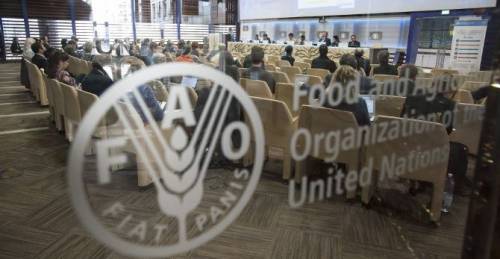The cost of sugar has climbed up by 2.6 per cent according to the Food Agriculture Organisation (FAO).
The spike in prices is predicated on drought in the world’s largest sugar exporter — Brazil — and monsoon floods in India and Indonesia.
The price index for sugar is 21 per cent lower than September 2017 estimates, but a 2.6 per cent rise occurred between August and September 2018.
There was a step down in prices of other commodities in the FAO basket, due to an increased volume of production.
The Cereal Price Index lost 2.8 percent, thanks to expectations of a ‘very large crop in the United States of America’. This forced export quotations down. Strong sales and shipment of wheat crashed global prices. Rice, 35 per cent of which is produced by China, also saw its cost drop in the period under focus.
Palm oil prices saw the sharpest decline, with increased export expected from major producing countries. Prices are now 25 per cent lower than September 2017 figures. The Vegetable Oil Price Index reduced for the eighth month. This time round, it fell by 2.3 percent to a three-year low.
The Price Index for dairy products moved down by 2.4 percent in September, in keeping with its downward trend.
FAO projects that world cereal utilisation will rise to 647 million tonnes in the 2018/19 season, up 1.1 percent from the estimated level for the previous year.
Global trade in cereals is anticipated to reach 400 million, about 1.0 per cent less than the record level of the 2017/2018 marketing season.
International trade volumes of wheat and rice are predicted to decline, while maize volumes will likely increase.
According to the National Sugar Development Council, manufacturers in the country imported 1.4 million metric tornes of raw sugar for refining in the first half of 2017. The country is said to have imported 4.5 milion mt of wheat at the cost of $2.05 billion chiefly from the U.S, while local production remained stagnated at 60,000 mt between 2015 and 2017.



